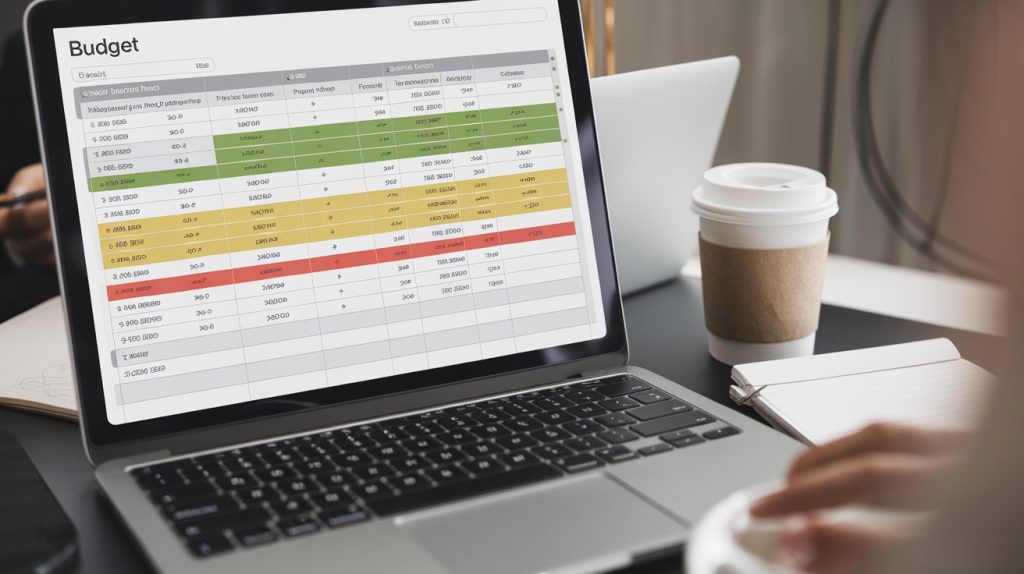When it comes to personal finance, many people find themselves feeling overwhelmed. Whether you’re fresh out of school, changing careers, or simply trying to gain better control over your money, mastering personal finance is essential for achieving long-term stability and success. This comprehensive guide will help you navigate the first steps on your journey toward financial empowerment.
Why Personal Finance Matters
Personal finance isn’t just about paying bills or saving a little money here and there. It’s about creating a system that enables you to meet your needs, achieve your dreams, and provide for unexpected circumstances. Financial literacy helps you make informed decisions about saving, spending, and investing your hard-earned money. Starting on the right foot can prevent financial stress, which is a common cause of anxiety in today’s fast-paced world.

Step 1: Assess Your Financial Situation
The first step to mastering personal finance is taking a hard look at where you currently stand. This means assessing your income, expenses, debts, and assets. It might seem daunting, but it’s crucial to know where you’re starting from.
1.1 Tracking Income and Expenses
Start by calculating your total monthly income. This includes your salary, any side hustle earnings, or passive income like dividends or rental income. Then, categorize and track your monthly expenses, including rent, groceries, utilities, transportation, entertainment, and any other costs.
Consider using financial apps such as Mint, YNAB (You Need A Budget), or even a simple spreadsheet to help track this data consistently. It will give you a realistic picture of how much money is coming in and going out.
1.2 Understanding Debt and Assets
Next, take inventory of your debt, whether it’s credit card debt, student loans, or a mortgage. List each debt, its interest rate, and its minimum payment. It’s equally important to recognize your assets. This includes cash savings, retirement accounts, real estate, or investments.
By understanding your current net worth, you can plan future actions more effectively.

Step 2: Setting Financial Goals
Once you understand where you stand, it’s time to determine where you want to go. Setting clear financial goals is essential for giving your money a purpose. Your goals could be short-term (e.g., saving for a vacation) or long-term (e.g., buying a home or retirement).
2.1 SMART Goals
When setting goals, it’s helpful to follow the SMART framework: Specific, Measurable, Achievable, Relevant, and Time-bound. For example, instead of vaguely saying, “I want to save money,” try, “I want to save $5,000 for an emergency fund within the next 12 months.”
2.2 Prioritizing Your Goals
Not all goals are created equal, and it’s crucial to prioritize them. Paying off high-interest debt should generally take precedence over savings goals, as it can free up more of your income for other pursuits. On the other hand, building an emergency fund is critical because it provides financial protection against unforeseen circumstances.

Step 3: Creating a Budget
Budgeting is the cornerstone of personal finance. It’s the tool that ensures your money is being allocated toward your goals rather than slipping through your fingers. The best budget is one that you can maintain consistently, as consistency is the key to financial success.
3.1 Popular Budgeting Methods
There are different ways to budget, and it’s important to find one that works for your lifestyle:
- 50/30/20 Rule: Allocate 50% of your income to needs, 30% to wants, and 20% to savings or debt repayment.
- Zero-based Budget: Every dollar of income is assigned a specific purpose, ensuring that nothing is left unaccounted for.
- Envelope System: This is a cash-based system where you put money into physical envelopes for different categories of spending (e.g., groceries, entertainment).
3.2 Tracking Your Budget
Once you’ve set up your budget, tracking it is essential. Financial apps can help you stay on top of your budget, or you can manually track your spending in a spreadsheet. Review your budget every month to see if you’re staying on track and adjust it as needed.

Step 4: Building an Emergency Fund
An emergency fund is essential for financial security. Life is full of unexpected events, from medical emergencies to car repairs, and having a cushion of cash can prevent these situations from derailing your financial progress.
4.1 How Much Should You Save?
Experts generally recommend saving three to six months’ worth of living expenses in an emergency fund. This amount should cover your essential costs like rent, utilities, and groceries in case of a job loss or other crisis.
4.2 Where to Keep Your Emergency Fund
It’s best to keep your emergency fund in a high-yield savings account, separate from your regular checking account. This keeps the money easily accessible while earning some interest.

Step 5: Start Investing Early
Investing is one of the most effective ways to grow your wealth over time. The earlier you start, the more you can take advantage of compound interest, which allows your earnings to generate even more earnings.
5.1 Retirement Accounts
Start by contributing to retirement accounts such as a 401(k) or an IRA. Many employers offer a matching contribution to your 401(k), which is essentially free money.
5.2 Diversifying Investments
While retirement accounts are essential, consider other investment vehicles such as stocks, bonds, and real estate. Diversifying your portfolio helps spread risk and can yield more consistent returns over the long term.

Step 6: Protecting Your Finances
Once you’ve started building wealth, the next step is to protect it. This means ensuring that you have adequate insurance and estate planning in place.
6.1 Insurance
Ensure that you have health, auto, home (or renters), and life insurance. Each of these protects you and your assets in case of accidents or emergencies.
6.2 Estate Planning
Consider writing a will and planning for the distribution of your assets. This step is often overlooked but is critical to ensure your loved ones are taken care of in the event of your passing.

Conclusion
Mastering personal finance takes time, effort, and dedication, but it is one of the most rewarding things you can do for yourself. By assessing your financial situation, setting clear goals, creating a budget, building an emergency fund, and investing wisely, you will be well on your way to financial independence. Along the way, don’t forget to protect what you build with insurance and estate planning. Remember, the goal isn’t to achieve perfection but to stay consistent and adapt as your financial circumstances evolve.
You can also read The 5 Essential Steps to Starting a Successful Business

